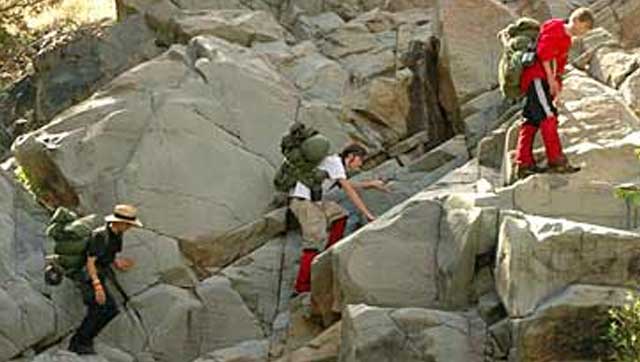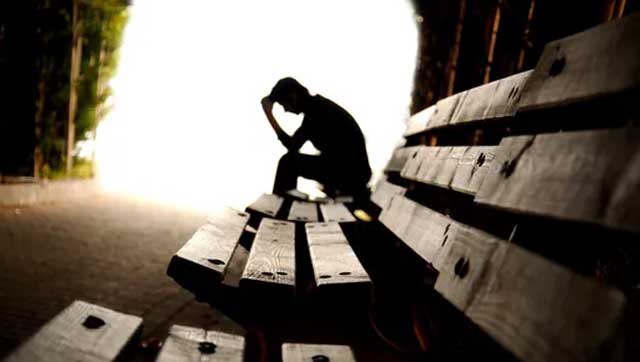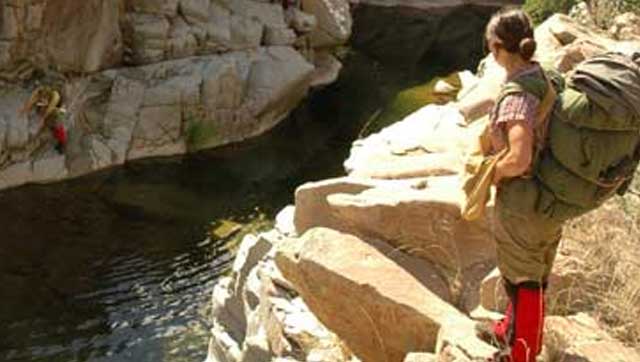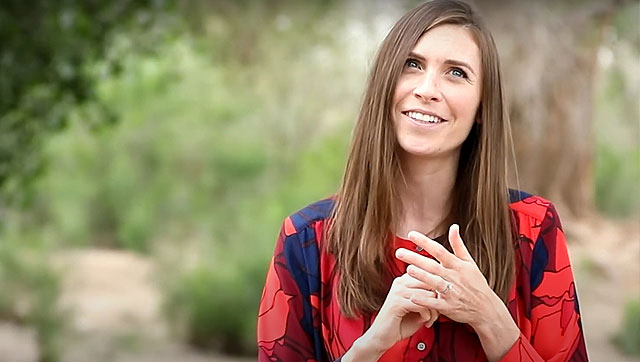Outcomes

Anasazi participates actively in independent research to determine the efficacy and best practices of outdoor behavioral healthcare in the treatment of adolescents and young adults struggling with emotional, behavioral, and other mental health issues. Much of the ongoing research is sponsored by the National Association of Therapeutic Schools and Programs (NATSAP) and the Outdoor Behavioral Healthcare Council (OBHC), an organization of state-licensed and nationally accredited wilderness therapy providers. Throughout the past three decades, this research (including studies conducted by the University of Idaho, Brigham Young University, the University of Minnesota, Western Washington University, and the University of New Hampshire, and numerous researchers) has consistently highlighted the marked improvement in family relationships reported by Anasazi alumni. Several of these reports and studies (see below) have highlighted the safety of OBHC wilderness therapy programs like Anasazi as well as Anasazi’s effectiveness in treatment of issues including substance abuse.
Does Wilderness Treatment Work? Does It Last?
For this outcome study the Youth Outcome Questionnaire (YOQ) with a sample of 858 kids and their families from seven programs over a full year. The YOQ is a simple but well-researched and solid therapeutic outcome test on which higher scores indicate greater behavioral/mental health disorder. Average scores for adolescents admitted to a psychiatric hospital are about 100; average score for teens in outpatient treatment are 78; the average community adolescent score is 23. The upper limit of the normal community range is 46.Our results showed that kids enter wilderness treatment programs with scores of about 100, as rated by their parents. (The kids believe they are much better off than that.) At discharge, ranging from three eight weeks later depending on the program, the parents scored their kids at about 49, just outside the normal community range.At three and six months after discharge, kids’ scores rose slightly, to 56 and 57, but not statistically significantly, before trending back down to 49 again at 12 months. In other words, contrary to a common opinion about brief, intense treatments, the therapeutic and behavioral gains of outdoor behavioral healthcare treatment were sustained over 12 months.
A follow-up study published in 2004, when these clients were two to three years out of their outdoor behavioral healthcare treatment, called 88 of these families and kids (selected for their representativeness) to ask how they were doing, using a structured interview. Some of the important results:
Russell, K.C. (2005). Two years later: A qualitative assessment of youth-well-being and the role of aftercare in outdoor behavioral healthcare treatment. Child and Youth Care Forum, 34, 3, 209-239.
Russell, K.C. (2004). Two years later A qualitative assessment of youth-well-being and the role of aftercare in outdoor behavioral healthcare treatment. Technical Report 1, Outdoor Behavioral Healthcare Research Cooperative, School of Health and Human Services, University of New Hampshire, Durham NH. 43 pp.
Russell, K.C. (2003). Assessing treatment outcomes in outdoor behavioral healthcare using the Youth Outcome Questionnaire. Child and Youth Care Forum. 32, 6, 355-381.
Russell, K.C. (2002). A longitudinal assessment of treatment outcomes in outdoor behavioral healthcare. Technical Report 28, Idaho Forest Wildlife and Range Experiment Station, Moscow, ID. 35 pp.
Russell, K.C. (2002). Does outdoor behavioral healthcare work? A review of studies on the effectiveness of OBH as an intervention and treatment. Journal of Therapeutic Camping, Summer/Fall, 2, 1, 5-12.
Drugs, and Getting Motivated to Give Them Up
- Parents and kids reported that getting through school and finding new, healthier friends was a long, often difficult process.
Mental Health Issues: Depression, Anxiety and Stress
These numbers compare favorably with federally supported outcome results from public programs. A recent DATOS study, which included 90 days of residential treatment followed by three months of out-patient therapy showed the average change of marijuana use in the 90 days before treatment to the 90 days in outpatient therapy was from 63 days to 45 days. Those figures included only the adolescents who completed the program; an unspecified percentage quit during treatment and were not included in the outcome results.
In the chemical dependency treatment field “motivation to change” has become a big issue: most substance abusers enjoy that activity and don’t see a need to stop it, even though it may be very damaging to their lives. A test called the URICA has been designed to assess readiness for change and, using that with the clients in this study, Dr. Russell established that the drop in substance abuse following treatment was almost certainly due to the effectiveness of the treatment they experienced, because the programs were able to inspire their clients to want to give up on, or significantly reduce, their use of alcohol and drugs. Entering wilderness treatment, 73 percent of our clients either had no interest in changing their behavior, or, though they might be thinking about it, were reluctant to take any action. The rest had stopped trying to ignore the problem and were beginning to participate in efforts to change. By the end of their wilderness treatment, none of our clients were still in the first phase (“uninvolved”) and just nine percent were in the second phase (“reluctant.”) The other 90 percent were either in the active participation phase or, having worked through the issues and decided to quit or seriously reduce their use, had gone on to the final phase, “maintenance” of their decisions. There was some backsliding at the six month follow up, but of the 229 clients who filled out this questionnaire at six months, 182 fit the “participation/maintenance” profile (79 percent) while 21 percent fit the “reluctant” profile. None were “uninvolved.” It is rare in the evaluation of treatment to see such strong results.
Russell, K.C. (2007). Adolescence substance use treatment: Service delivery, research on effectiveness, and emerging treatment alternatives. Journal of Groups in Addiction and Recovery,2(2-4), 68-96.
Russell, K.C. (2006). Depressive symptom and substance use frequency outcome in outdoor behavioral healthcare. Technical Report 1, December 2006, Outdoor Behavioral Healthcare Research Cooperative, College of Education and Human Development, University of Minnesota, Minneapolis, MN. 62 pp.
The young people in our programs also took a test, the DASS, to measure depression, anxiety and stress. While nearly half of the 660 clients who filled out this questionnaire indicated a least mild problems in these areas, the percentages who felt these problems were for them “severe” or “extremely severe” was much smaller.
| Admission | Third header | |||
|---|---|---|---|---|
| Depression | 20.6 % | 9.5 % | ||
| Anxiety | 20.5 % | 12.4 % | ||
| Stress | 12% | 5.26 % | ||
At the six month follow-up, scores continued to drop in all these areas except stress for the boys, which increased slightly, though the scores were in the mild range. Depression and anxiety were, on average for both boys and girls, squarely in the middle of the “normal” range. Not all of these changes were statistically significant, but they do show a clear real improvement.
Russell, K.C. (2007). Adolescence substance use treatment: Service delivery, research on effectiveness, and emerging treatment alternatives. Journal of Groups in Addiction and Recovery,2(2-4), 68-96.
Russell, K.C. (2006). Depressive symptom and substance use frequency outcome in outdoor behavioral healthcare. Technical Report 1, December 2006, Outdoor Behavioral Healthcare Research Cooperative, College of Education and Human Development, University of Minnesota, Minneapolis, MN. 62 pp.
The Therapeutic Alliance
Perhaps the reason our clients made such gains across the areas of coming to want to change their lives, and then indeed very much reduced their substance abuse while decreasing their depression and anxiety, is to be found in a fourth test these clients filled out. Rather than an outcome study, it is a measurement of how they felt about their wilderness staff. At the end of their treatment time, these young people most commonly endorsed four items:
- The group leaders care about me as a person, 4.37 average score (5 point scale; 5 is high)
- The group leaders care about this group, 4.34
- The group leaders are helping this group, 4.32
- The group leaders have the skills and ability to help all of the members of this group, 4.23
It looks as though time in the beauty and peace of wilderness settings, growing physically strong and increasingly competent in outdoor living skills, is only one aspect of wilderness treatment. The other, and perhaps the one most essential to the healing process, is the strong, trusting therapeutic relationship between the kids and their staff members.
Russell, K.C. (2007). Summary of research in the Outdoor Behavioral Healthcare Research Cooperative from 1999-2006. Technical Report 2, February 2007, Outdoor Behavioral Healthcare Research Cooperative, College of Education and Human Development, University of Minnesota, Minneapolis, MN. 52 pp.
Risk in the Wilderness
Parents considering enrolling their child into an outdoor behavioral healthcare program oftentimes are concerned that wilderness living puts their child at more risk than they would be in if they were in a more urban setting. OBHC initiated a comparison research project to determine if this assumption was correct, it was not. Here are some of the statistics from that research:Outdoor behavioral healthcare programs average injury rates are 1.12 per 1,000 participant days compared with:
- Backpacking 2.05
- Downhill Skiing 3.28
- Football Practice 19.74
Our focus on best practices has resulted in a 25 percent decrease in the number of incidents of injury and illnesses at our member programs despite a nearly three-fold increase in client days. We continue to track this information and our data compilation and analysis is now being done by Dr. Keith Russell at Western Washington University.
Russell, K.C. & Harper, N. (2006). Incident monitoring in outdoor behavioral healthcare programs: A four-year summary of restraint, runaway, injury, and illness rates. Journal of Therapeutic Schools and Programs, 1, 1, 70-90.
Previous Studies (1968 – 2001)
In November 2001, the University of Idaho (Keith Russell, Ph.D., 603-862-3047) published a study of client outcomes in eight participating outdoor behavioral healthcare programs (including Anasazi Foundation). Treatment outcomes were evaluated through client reports and parent assessments of adolescent’s well-being at admission and discharge utilizing the Youth Outcome Questionnaire (Y-OQ). Results of the study indicated that participation in OBH programs led to statistically significant reduction in the severity of behavioral and emotional symptoms. When comparing the results of this study to other outcome studies using Y-OQ, Anasazi showed greater score reductions in shorter treatment durations than alternative interventions.Current and ongoing outcomes studies are conducted by Mark A. Widmer, Ph.D., at Brigham Young University (801 378-3381) using data collected from admission social histories and surveys taken at six weeks, one year, and three years after discharge. In data collected July 1, 1996 through June 31, 2000, 83% of parents reported they are satisfied or extremely satisfied with their experience at Anasazi. Less than 5% reported placing their child in inpatient care after Anasazi.In January 1996, an outcome study was conducted under the direction of S. Harold Smith, Ph.D. of Brigham Young University. The study was facilitated using the pre-admission data of 239 participants from 1993-1995 and comparing the data with a post participation questionnaire. In addition, data was collected regarding the parents’ evaluation and satisfaction. The results of the study suggest that 52% of those discharged from the Anasazi program had either no recurrence or a minor recurrence of presenting problems. Of those graduates who experienced a recurrence of presenting problems 86% received few, if any, fee-based treatments after leaving Anasazi. Concomitantly, 53% of the parents indicated the program had a positive affect on their child’s attitude. Further, 73% of the parents rated Anasazi’s program as excellent.In September 1991, Anasazi Foundation participated in the JM Foundation’s Search for Excellence in Rehabilitation. Thirty participants treated for chemical dependency during 1990 were surveyed for long term treatment success. Of those surveyed, 77% had maintained total abstinence from use of alcohol or other controlled substances. At the time of the survey, 20% of those who had relapsed were maintaining abstinence and reported finding solutions within the family.In September 1990, LDS Social Services surveyed 40 program participants referred from June 1988 to July 1990. When asked about their experience at Anasazi, 93% reported positively. When asked about treatment by Anasazi staff, 100% answered positively.
Note: Data collected between 1988 and 1995 reflects parents’ perceptions of their child’s behavior. Changes between pre-admission and post-discharge may indeed be due to participation in the Anasazi program. It is also possible, however, that these changes are due to extraneous influences such as maturation and history. Comparisons between other forms of treatment (hospital, residential, etc.) may be the most appropriate use of this data.
During 1968-74, both nationally and locally developed personality and self-concept measurement tests were given to participants before and after a wilderness survival experience as developed by Anasazi founder Larry D. Olsen. In a measure of self-concept and related attitudes–consistent, positive changes were found in more than 80% of the participants’ evaluations of their moral-ethical attitudes, personal identities, family relationships, social relationships, and general behavior. One year later it was found that the initial positive, personal changes were generally maintained.




























